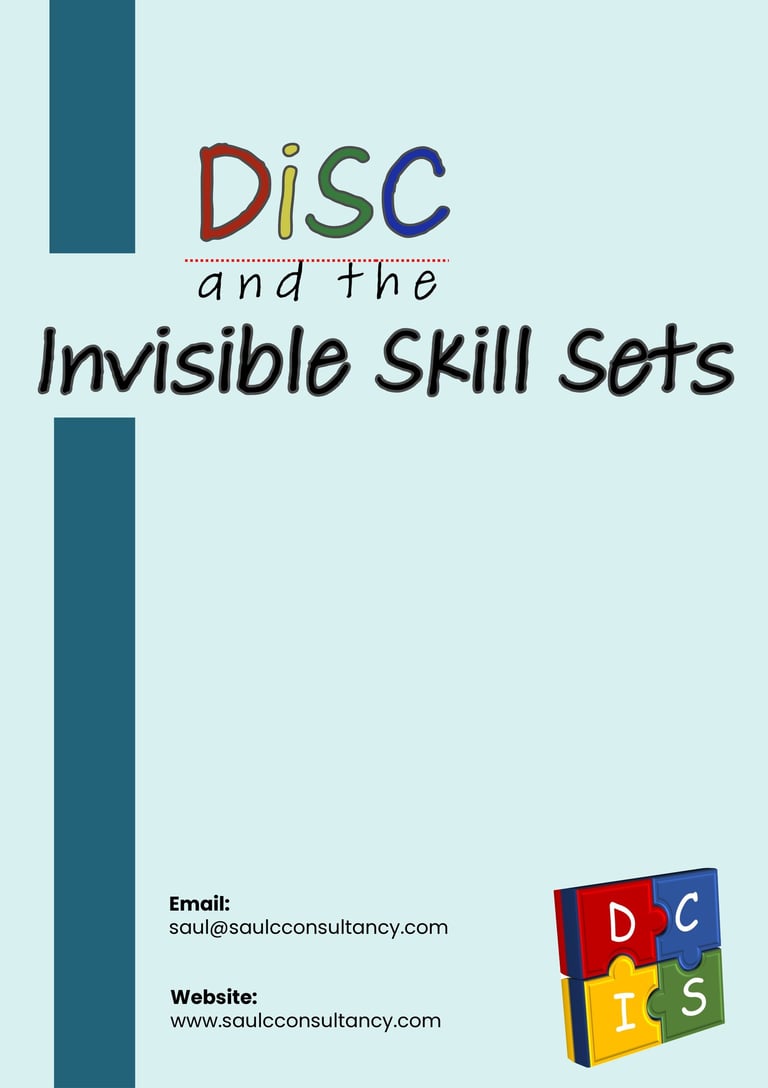In the world of behavioural assessments, the DISC model is a powerful and well-established tool. It helps individuals and organisations understand how people prefer to behave and interact, and depending upon which DISC assessment you use, it may include their behaviour under pressure.
For the most part, when exploring or reading about DISC the explanations will cover the basic D (Dominance), I (Influence), S (Steadiness) and C(Compliance) characteristics but in a singular style when in reality, most individuals are not defined by just one style. They have two, sometimes three, strong behavioural factors that combine in ways that create nuanced, highly valuable strengths.
These combinations can reveal what I call Invisible Skill Sets — behavioural capabilities that are not always explained or even that obvious, but have a profound impact on team performance, communication, leadership, and adaptability.


Disc & the Invisible Skill Sets


Unlocking Potential: Harnessing the Big Five in the Workplace is a practical, jargon-free guide to using the Big Five (OCEAN) personality traits to build healthier, higher-performing workplaces. It shows leaders, HR and L&D professionals how to turn personality insight into everyday decisions about hiring, development, team design and change, rather than leaving it as a one-off assessment report.
Instead of treating Openness, Conscientiousness, Extraversion, Agreeableness and Neuroticism as abstract labels, this booklet walks through how each trait shows up in real behaviours, strengths and risks at work. It then shows how to assess these traits reliably, and how to use the data in recruitment, team composition, leadership development, learning design and performance conversations.
This resource is designed as a hands-on playbook, with chapters on communication, conflict, engagement, motivation and organisational change, all viewed through the Big Five lens. Readers come away with clear, actionable strategies for building balanced teams, tailoring learning paths, supporting people through change and improving retention by aligning roles, personalities and culture.
The booklet is ideal for HR professionals, people leaders, L&D practitioners and consultants who want to ground their practice in a robust, evidence-based model without getting lost in theory. Whether you are just starting with personality assessment or looking to deepen beyond tools like DISC, it offers a structured, workplace-focused way to harness the Big Five to unlock hidden potential across your organisation.
